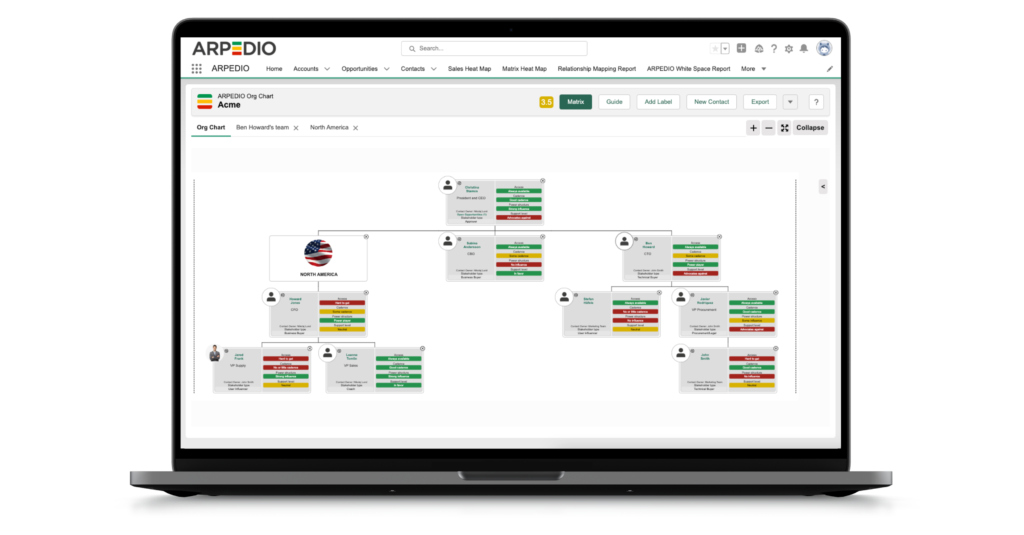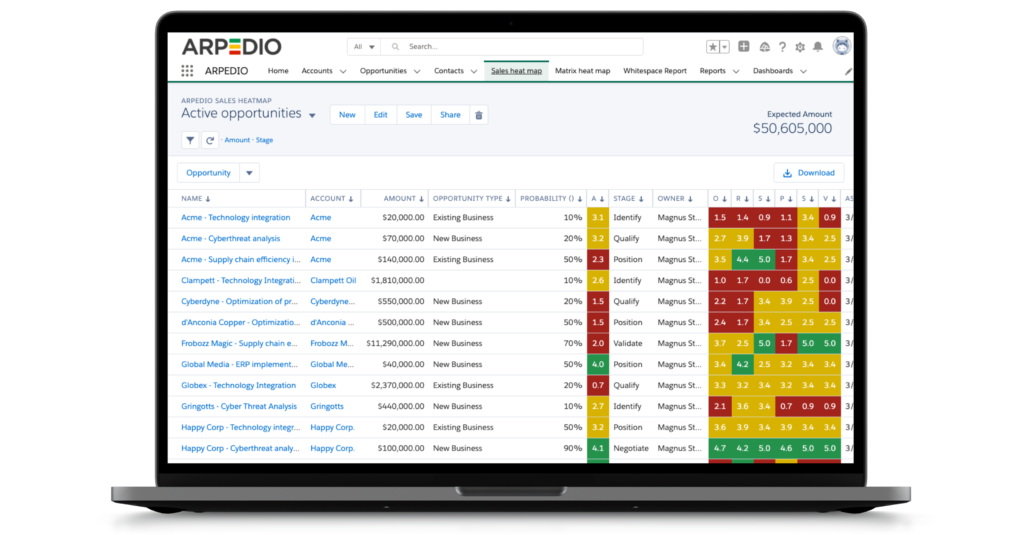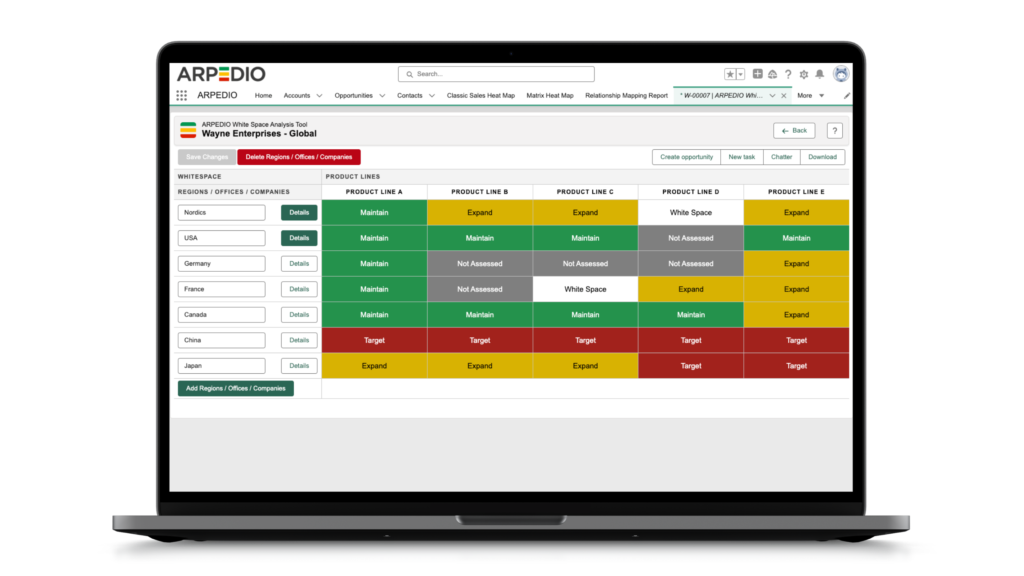What exactly is an Account-Based Selling Strategy? In this comprehensive guide, we delve into the nuts and bolts of Account-Based Selling, a strategy that has revolutionized the sales process for countless businesses. From small startups to large enterprises, ABS has shown its potential to foster deeper client relationships, optimize resource allocation, and dramatically increase sales efficiency.
Table of Contents
Introduction to Account-Based Selling Strategy
In the dynamic world of sales, the emergence of Account-Based Selling (ABS) has marked a significant shift in how businesses approach their sales and marketing efforts. At its core, ABS is not just a strategy but a philosophy that aligns sales and marketing efforts towards the most lucrative opportunities, transforming the way companies engage with their top-tier accounts.
In the following, we’ll explore the core concepts of ABS, unraveling its principles and methodologies. We’ll also highlight the tangible benefits of adopting an ABS approach, from enhanced customer engagement to improved sales outcomes. For those ready to embark on this journey, we provide a step-by-step roadmap to develop an effective ABS strategy, including practical tips for identifying and selecting target accounts, personalizing outreach, and ensuring seamless alignment between sales and marketing teams.
Whether you are new to the concept of Account-Based Selling or looking to refine your existing strategy, this guide promises to equip you with the knowledge and tools necessary for implementing a successful ABS strategy. So, let’s dive in and unlock the full potential of Account-Based Selling, transforming the way you connect with your key accounts and drive your business forward.
Understanding the Core Concepts of Account-Based Selling
Account-Based Selling (ABS) is a strategic approach that turns traditional sales on its head. Instead of casting a wide net to capture any potential lead, ABS focuses on targeting and engaging specific high-value accounts that are most likely to convert and generate significant revenue. This tailored approach requires a deep understanding of the core concepts that make ABS both unique and effective. Let’s break down these fundamental elements:
- Targeted Account Selection: At the heart of ABS is the meticulous process of selecting key accounts. This isn’t about random selection; it’s a strategic decision based on data and insights. Businesses using ABS analyze market data, customer profiles, and potential revenue to identify accounts that offer the highest value.
- Personalized Engagement: ABS thrives on personalization. It’s about understanding the specific needs, challenges, and opportunities of each target account and tailoring your sales and marketing strategies to address them. This bespoke approach fosters stronger relationships and positions your company as a solution-provider, not just a seller.
- Sales and Marketing Synergy: Unlike traditional models where sales and marketing operate in silos, ABS necessitates a seamless integration of these two functions. Sales teams provide insights into customer needs, while marketing teams create personalized content and messaging. This collaboration ensures a consistent, cohesive approach that resonates deeply with each target account.
- Leveraging Technology: In today’s digital age, ABS is heavily reliant on technology. From CRM systems to analytics tools, technology plays a pivotal role in identifying potential accounts, tracking engagements, and analyzing results. These tools not only streamline the ABS process but also provide valuable insights that help refine strategies over time.
- Long-term Relationship Building: ABS is not a short-term tactic; it’s a long-term strategy focused on building and nurturing relationships. This approach recognizes that the most valuable accounts are those with whom you can develop deep, lasting partnerships. It’s about moving beyond one-time transactions to create enduring value for both your business and your clients.
- Outcome-Focused Metrics: In ABS, success is measured not just by the number of deals closed but by the quality and longevity of those deals. Key Performance Indicators (KPIs) in ABS are tailored to reflect the value of long-term relationships, customer satisfaction, and the overall impact on revenue.
By understanding these core concepts, businesses can effectively implement an ABS strategy that not only aligns with their sales goals but also resonates with their target audience. This focused approach leads to more efficient use of resources, higher conversion rates, and ultimately, a more robust bottom line.
Benefits of Adopting an Account-Based Selling Strategy
Embracing an Account-Based Selling Strategy can transform the way a business approaches its sales and marketing efforts, leading to numerous tangible benefits. By focusing on targeted, high-value accounts and fostering deep, personalized relationships, ABS offers a range of advantages that can significantly impact the bottom line. Here are some key benefits of implementing an ABS approach:
- Enhanced Customer Relationships: ABS’s personalized approach allows businesses to deeply understand and meet the specific needs of each account. This leads to stronger, more trust-based relationships, positioning your business as a trusted advisor rather than just a vendor.
- Increased Sales Efficiency: By concentrating resources on a smaller number of high-value accounts, ABS streamlines the sales process. Sales teams spend less time on unproductive leads and more on nurturing relationships that have a higher likelihood of conversion and long-term value.
- Higher Conversion Rates: A targeted approach means messages and solutions are highly relevant to each selected account, significantly increasing the likelihood of conversion. ABS strategies are known for their effectiveness in turning prospects into loyal customers.
- Better Alignment of Sales and Marketing: ABS requires close collaboration between sales and marketing teams, ensuring that all efforts are unified and targeted. This alignment not only improves the effectiveness of campaigns but also creates a more cohesive customer experience.
- Optimized ROI: With resources focused on accounts with the highest potential return, ABS can lead to a more efficient allocation of budget and a higher overall return on investment. This is particularly advantageous in competitive markets where maximizing every dollar spent is crucial.
- Predictable Revenue Streams: ABS strategies often lead to more predictable and sustainable revenue streams. By building long-term relationships with key accounts, businesses can better forecast sales and revenue, aiding in more effective planning and strategy development.
- Scalability: While ABS is intensive in its initial targeting and personalization efforts, it is a highly scalable strategy. As businesses learn more about what works for their key accounts, they can replicate these strategies across similar accounts, amplifying their success.
In conclusion, adopting an Account-Based Selling Strategy offers a multitude of benefits that can lead to increased efficiency, stronger customer relationships, and improved financial performance. By focusing on the right accounts with a tailored approach, businesses can unlock new levels of success in their sales and marketing endeavors.
9 Steps to Develop an Effective Account-Based Selling Strategy
Developing an effective Account-Based Selling Strategy requires careful planning and execution. It’s a process that involves understanding your market, aligning your sales and marketing teams, and continuously refining your approach based on feedback and results. Here are the critical steps to create a robust ABS strategy:
- Define Your Ideal Customer Profile (ICP): The foundation of any successful ABS strategy is a clear understanding of your ideal customer. This involves analyzing your current customer base, market data, and industry trends to identify the attributes of your most valuable accounts.
- Engage in Thorough Market Research: To tailor your approach to each account, you need a deep understanding of their business challenges, industry trends, and competitive landscape. This research is vital to ensure your messaging and solutions are relevant and compelling.
- Align Sales and Marketing Teams: ABS thrives on the close collaboration between sales and marketing. Aligning these teams ensures a unified approach to account targeting, message development, and campaign execution.
- Develop Targeted Account Lists: Based on your ICP and market research, develop a list of target accounts that are most likely to benefit from your product or service. This list should be dynamic, allowing for adjustments as you gather more data and insights.
- Create Personalized Marketing Campaigns: For each target account, develop personalized marketing campaigns that speak directly to their unique needs and pain points. This could include customized content, tailored email campaigns, and targeted social media strategies.
- Implement a Multi-channel Outreach Approach: Engage with your target accounts through multiple channels. This could include direct sales outreach, digital marketing, events, and social selling. The key is to be where your customers are and to communicate in a way that resonates with them.
- Utilize Advanced Analytics and CRM Tools: Leverage technology to track your interactions with each account, measure engagement, and analyze the effectiveness of your strategies. Tools like CRM and analytics platforms are essential for this step.
- Continuously Monitor and Optimize: ABS is not a set-it-and-forget-it strategy. Continuously monitor the performance of your campaigns, gather feedback from your sales and marketing teams, and adjust your approach as necessary.
- Foster Long-term Relationships: Always focus on building and nurturing long-term relationships with your target accounts. ABS is about creating value over time, not just closing a quick sale.
By following these steps, businesses can develop an Account-Based Selling Strategy that not only aligns with their sales goals but also resonates with their target audience. This focused approach can lead to more efficient resource utilization, higher conversion rates, and ultimately, a stronger bottom line.
Metrics and KPIs for Measuring Success in Account-Based Selling Strategy
When embarking on an Account-Based Selling Strategy, measuring success goes beyond just looking at the number of sales closed or leads generated. ABS is a nuanced approach, requiring a distinct set of metrics and Key Performance Indicators (KPIs) that reflect its unique focus on targeted, high-value accounts. Understanding and tracking the right metrics is pivotal in gauging the effectiveness of your ABS efforts and making informed decisions for continuous improvement.
Let’s imagine the journey of a company, ABC Tech, which recently implemented an ABS strategy. The first step for ABC Tech was to establish clear, specific KPIs aligned with their ABS objectives. These KPIs included:
- Account Engagement Score: This KPI measures the level of engagement of each target account. For ABC Tech, this meant tracking how often and in what ways their target accounts interacted with their content, sales outreach, and marketing campaigns. Engagement could be anything from website visits and content downloads to email responses and meeting requests.
- Deal Closing Rate: ABS is about quality over quantity. ABC Tech focused on the percentage of deals closed from their targeted accounts, rather than just the sheer number of deals. This metric helped them understand how effectively they were converting high-value prospects into customers.
- Average Deal Size: Given the focus on high-value accounts, ABC Tech also measured the average size of the deals closed. This KPI was crucial to understand if their ABS strategy was indeed attracting and converting the more lucrative opportunities they aimed for.
- Customer Lifetime Value (CLV): ABS strategies are long-term oriented, and so, ABC Tech looked at the CLV as a critical KPI. This metric gave them insight into the long-term value they were generating from each account, beyond the initial sale.
- Sales and Marketing Alignment: An essential aspect of ABS is the synergy between sales and marketing. ABC Tech developed KPIs to measure this alignment, such as the number of joint sales and marketing initiatives and the level of collaboration in account planning and content creation.
- Customer Satisfaction and Retention: Finally, ABC Tech understood that the success of an ABS approach is also reflected in customer satisfaction and retention rates. They regularly gathered feedback from their key accounts to gauge satisfaction and monitored retention rates to ensure they were maintaining strong relationships with their most valuable customers.
By focusing on these tailored KPIs, ABC Tech could effectively measure the success of their Account-Based Selling Strategy. These metrics provided a clear picture of how well they were engaging with their target accounts, the quality of the relationships they were building, and the financial impact of their ABS efforts. Regularly reviewing and analyzing these KPIs enabled ABC Tech to make data-driven decisions, fine-tune their strategies, and continually enhance their approach to ABS.
Concluding Best Practices for Implementing Account-Based Selling Strategy
In conclusion, the successful implementation of an Account-Based Selling Strategy is a nuanced and rewarding endeavor. It’s a journey that begins with a deep understanding of your market and the careful selection of high-value accounts, underscored by a commitment to personalization and relationship-building. The essence of ABS lies in the harmony between sales and marketing efforts, leveraging the strengths of both to create a unified, targeted approach.
Investment in the right tools and technologies is key, enabling businesses to track, analyze, and refine their strategies with precision. Education and continuous development of your team play a vital role in maintaining the effectiveness and relevance of your ABS approach.
Remember, the heart of ABS is not in short-term gains but in fostering long-lasting, mutually beneficial relationships with your key accounts. This strategy requires patience, persistence, and a willingness to adapt based on feedback and evolving market conditions. Celebrate your successes, learn from any setbacks, and always keep an eye on the future, ready to evolve your strategy as needed.
Adopting an Account-Based Selling Strategy is more than just a sales tactic; it’s a strategic business decision that, when executed well, can lead to unparalleled customer relationships and business growth.










